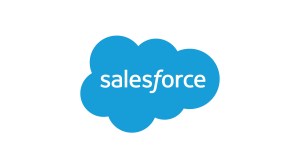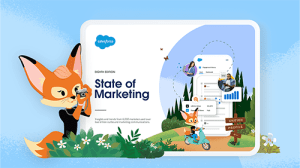What ‘Real-Time Marketing’ Means? And How Can it Wow Your Customers?



Marketers know it’s important to reach customers in “real time.” But what does “real time” really mean when it comes to marketing?

Salesforce
Marketers know it’s important to reach customers in “real time.” But the phrase “real time” means different things to different people. We take a look at what that really means.
If you’re like most marketers, you’ve been hearing the term “real-time marketing” a lot lately. And you’ve probably been wondering, what is real-time marketing? Are we delivering content in seconds? Milliseconds? Even faster?
It can sound like marketers need to live in the world of the Oscar winning film Everything Everywhere All at Once. But that’s not necessarily the case. What matters is that you reach your customers when they need to be reached, with the right experience. Real-time marketing doesn’t mean having all the answers all the time – it’s actually about giving customers what they need, when they need it.
What can a customer data platform do?
A customer data platform can help take your marketing team to the next level, while keeping cost efficiency in mind.
Let’s look at the concept of real-time marketing and show some ways leading brands use it to win customers.
What is the difference between real-time marketing and real-time data?
If you search for “real-time marketing” you’ll find a variety of definitions. They range from the vague (“systematically responding to your customers”) to the prescriptive (“focusing on customer feedback”). It seems that no-one can agree what it really means.
Let’s start with the difference between real-time data and real-time marketing. Real-time data is processed and available for use right after it’s captured. That’s milliseconds. For example, the GPS on your phone captures your location and recommends a driving route in real time.
But while it’s important to capture and process data quickly, it’s not always necessary to act on it right away. This is especially true in marketing, when the customer drives the journey. Real-time does not have to mean right now. It’s delivering the information when the end user needs it. That could be seconds or even hours later.
Travel is a very time-sensitive business. If a customer’s digital profile isn’t accurate in real time, it can trigger unfortunate events.
When a customer changes their seat or flight on an airline’s app or website, they expect it to show up in their profile right away. When they later go to a service counter, or call customer care, they expect — quite reasonably — that the service agent will be up to date. On the other hand, the customer is probably not expecting that the airline will send them irrelevant emails or offers.
This example shows us the difference between real-time data and real-time marketing. Real-time systems should update customers’ profiles right away. On the other hand, real-time marketing should happen at whatever speed is the right one for the customer — whether that’s today, in five minutes, or next week.
There are implications for the marketers’ back-end data processing systems and resource requirements.
When the customer is on the website or app, they expect their actions to be processed in milliseconds. But there’s no reason the contact centre can’t be updated in seconds and the email system within minutes.
Managing response rate requirements can lower costs and complexity, as long as this doesn’t impact the customer experience.
What do marketers mean when they say “real-time”?
On most occasions, when marketers say real-time, what they often mean is right-time. It means delivering the right data at the right time, to the right systems, to better connect with customers.
- Right-time is doing what is needed to make each moment count for the customer
- Real-time is collecting and processing data with no delay
The reason to make this important distinction is there can be major technical and organisational costs to imposing real-time requirements on the marketing team. Some teams have resources to handle it and some don’t.
It’s more important to make strategic investments into the systems that need to be real time — for example, your personalisation platform and customer data platform (CDP) — and understand what’s required elsewhere.
How can you set your real-time data priorities? It helps to remember that marketing has two basic modes:
- Respond: You’re reacting to customers when they’re already engaged. They’re on your website, in your app, or visiting you in your store.
- Inspire: You’re trying to get the attention of customers and prospects when they may not be thinking about you. You send emails with offers, or perhaps show ads on Facebook and Instagram, etc.
In most cases, it’s the ‘Respond’ mode that requires real-time handling of data. On the other hand, most ‘Inspire’ activities are pre-planned and benefit from complete and curated data. Of course, that data needs to be up to date, but it doesn’t necessarily need the lightning-fast response times of real-time data management.
In some cases, real-time responses can be counterproductive. Take an abandoned cart email. Not many of us would react calmly to a reminder email — or, even worse, a text message — a few milliseconds after we decided to leave. That’s what we mean when we talk about real-time marketing. Get the timing right, and you could attract a new customer. Get it wrong, and you might turn them away permanently.
What can you do with a CDP using real-time data?
When you’re making decisions based on real-time data, you’re able to respond to customers in ways that make sense to them. Upgrading your customer data platform to one built on real-time data can help make sure that you have the answers your customers want — when they want them.
Doing this not only means happier customers, but it also improves your bottom line in a cost-efficient manner, too.
For example, a customer might make a purchase on an e-commerce website that puts them into a high-value segment. The segment change can trigger — right away — that person’s entry into a journey tailored to high-value customers. You can then target them with the right ad the next time they’re scrolling through Instagram.
Recently, we announced Data Cloud, our CDP that uses real-time data to make real-time marketing easier for companies. Making the most of real-time data can help you improve customer journeys.
Anyone considering a CDP to support real-time data management should ask how well it will support their “right-time” requirements. Just having parts of the customer journey happen in real time may not be enough. For example:
- First-party data: Many enterprises already have a trove of first-party data, and it should be easy to make use of it in real time with your CDP.
- Data actions: Marketers have different ways to communicate with customers, and these different channels need to receive rapid signals from the real-time CDP.
- Partnerships: Reliable and easy-to-use integrations with key partners also help eliminate friction in the data transfer process. For example, we recently announced integrations with Snowflake, Amazon SageMaker, Microsoft Azure, and others on the AppExchange.
Any confusion about what is and isn’t real-time fades in importance when we pose a better question: What does the customer really need from us right now?
Get insights on balancing customer expectations for personalisation and privacy
Download the Salesforce State of the Connected Customer report.



This post originally appeared on the U.S. version of the Salesforce blog.




















